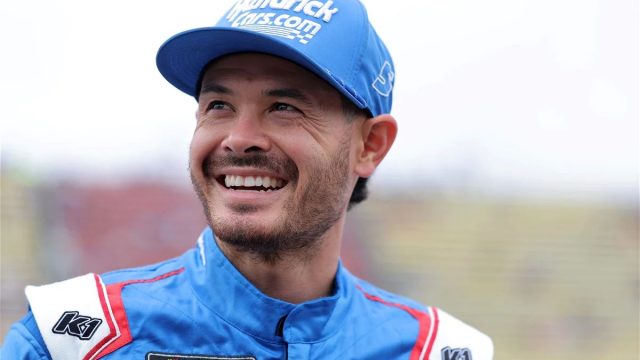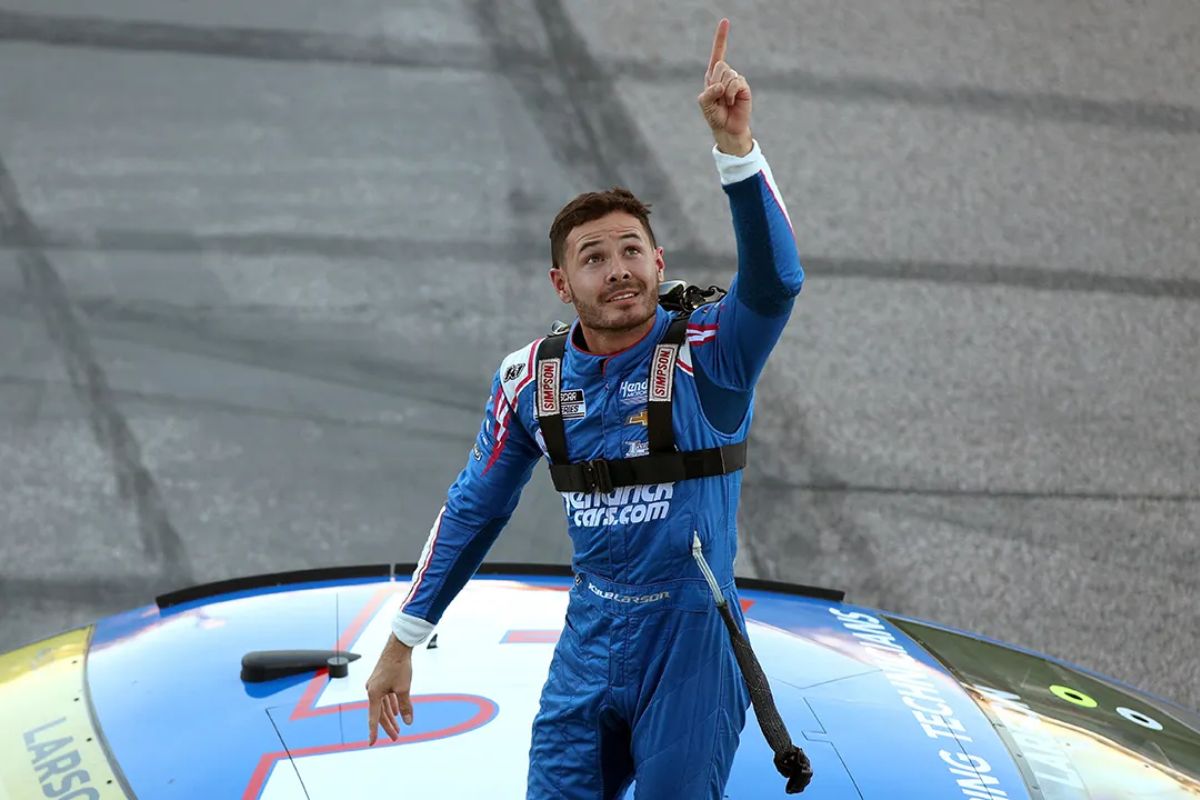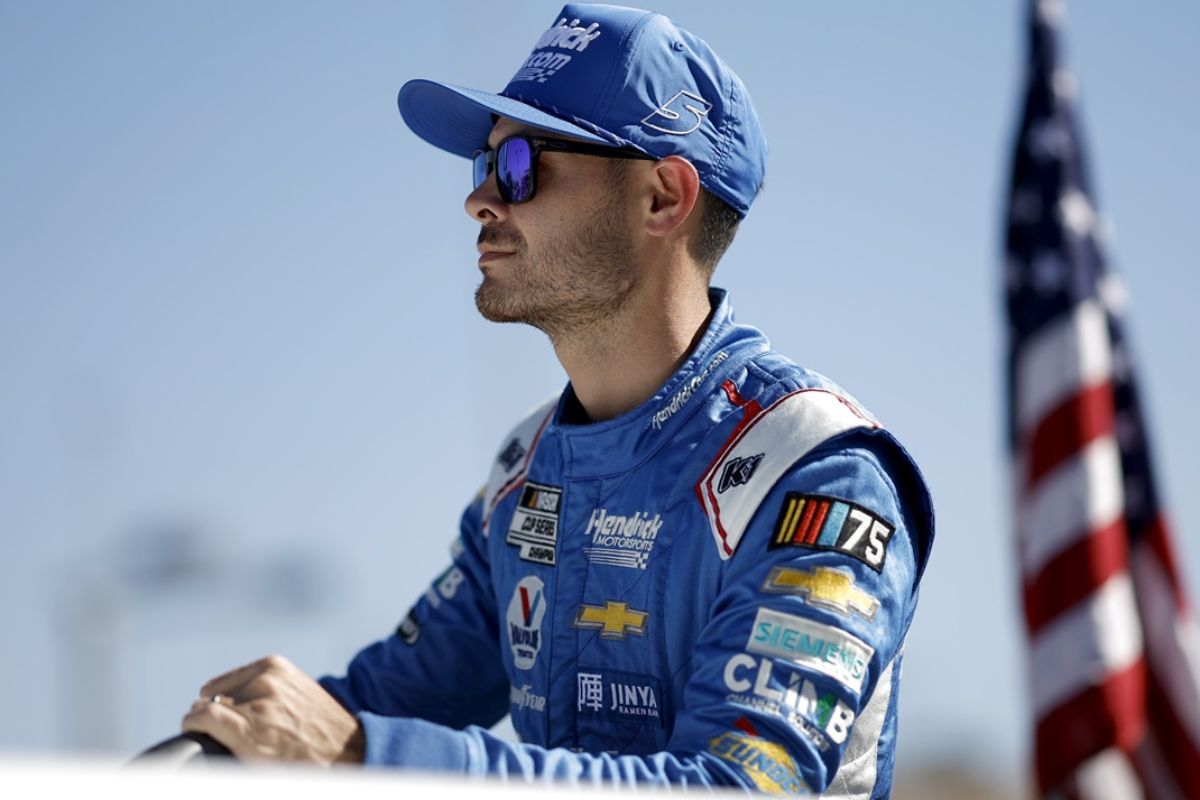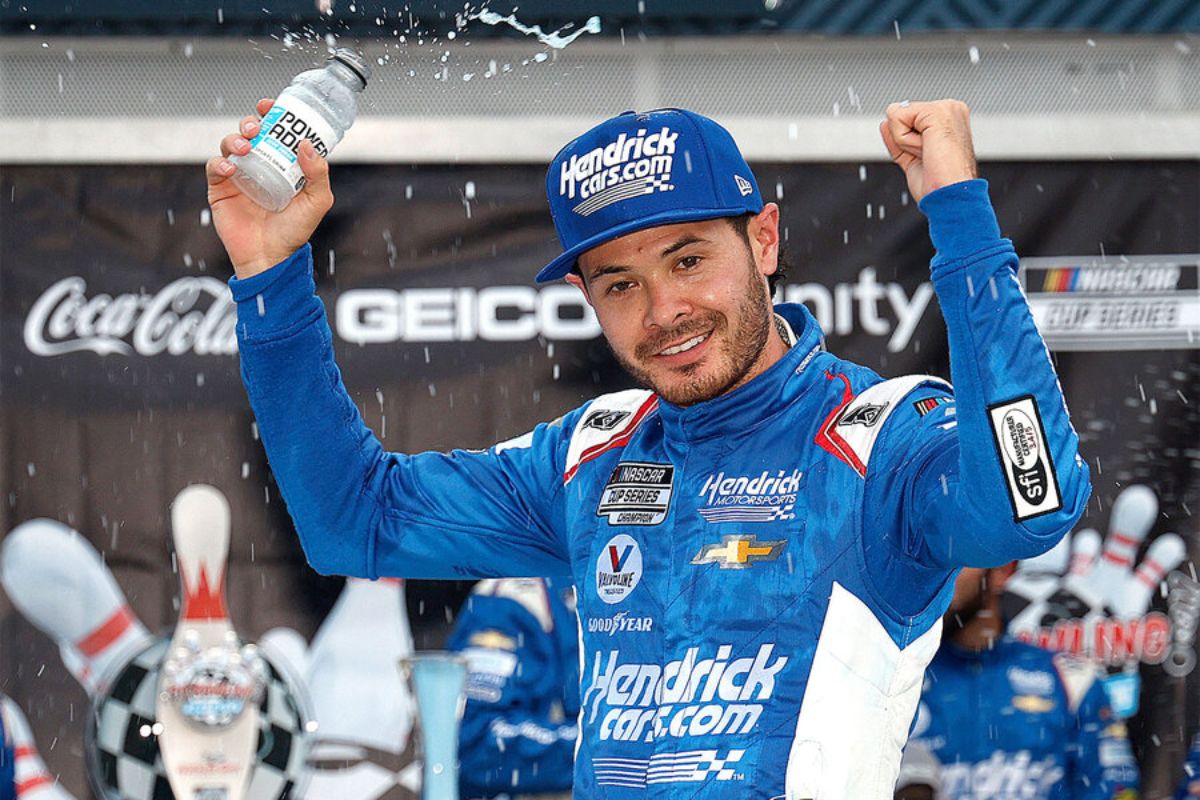Kyle Larson Questions NASCAR Parity: Kyle Larson‘s recent exit from the Goodyear 400, caused by a critical tire failure, has sparked a broader discussion on NASCAR’s commitment to parity across its teams. Larson’s critique highlights an underlying issue beyond mere equipment failure; it questions whether inherent disparities in team resources and technical capabilities could undermine the sport’s competitive balance. As Larson calls for more equitable conditions, it prompts us to ponder the implications of resource distribution in motorsports.
Key Takeaways
- Larson criticized the reliability of NASCAR equipment following a tire failure at the Goodyear 400.
- He raised concerns about disparities in team resources and technology affecting race outcomes.
- Larson’s incident triggered discussions on the need for parity in racing technology and setups.
- He urged for a dialogue within NASCAR to address and improve competitive balance.
- The issue highlighted during the Goodyear 400 has intensified debates on tire performance and vehicle safety.
Kyle Larson’s Disappointing Exit from the Goodyear 400
Kyle Larson’s promising performance at the Goodyear 400 was abruptly curtailed by a left rear tire failure, marking his second DNF of the season. The incident occurred while Larson was in a robust seventh position, maneuvering through turn three at Darlington Raceway. This unexpected setback not only ejected him from the race but also triggered the sixth caution, reshaping the competitive landscape of the event.
Analyzing the mechanics of the failure, the deflation of the left rear tire is particularly concerning as it suggests potential issues in tire durability or vehicle setup that could have broader implications for teams relying on similar strategies. The fact that this occurred despite Larson’s seasoned precision and the team’s rigorous preparation highlights the unpredictable nature of racing dynamics, especially at a track as demanding as Darlington.
From a strategic perspective, Larson’s exit had a domino effect on the race’s tactical developments. His withdrawal from the top ten reshuffled the field, offering opportunities for other drivers to capitalize on the sudden vacancy. This incident amplifies the critical nature of equipment reliability and the fine margins on which race outcomes can pivot.
Furthermore, this event places a spotlight on the ongoing discussions about equipment parity and reliability in NASCAR. Incidents like these not only affect individual race outcomes but can also influence championship trajectories and team strategies moving forward. For Larson, this marks a significant setback in his campaign, challenging him to recalibrate and strategize for future races under the shadow of reliability concerns.
Larson’s Post-Race Reaction
Frustration was palpable in Larson’s demeanor as he recounted the unexpected tire failure that prematurely ended his race at the Goodyear 400. Speaking to The Frontstretch, Larson dissected the moments leading to his exit, emphasizing his role in assisting his teammate, William Byron. His narrative detailed how an attempt to aid Byron led to a catastrophic collision with the wall, triggered by a tight pack and exacerbated by the tire’s failure.
“No, I didn’t really expect the tire to go. I hit the wall, the stop letting William (Byron) by. I just, I was trying to keep give him as much space to Bubba, who was even trying to race him off the wall. And then I just hung out there too long too high. Got stuck in the middle, hit the wall… I was actually really tight. But shred a tire back, it’s more difficult to pass; takes so long to catch traffic in next races.” – larson
Larson’s analysis extended beyond the immediate incident, touching upon broader implications for NASCAR’s competitive balance. His pointed critique of the tire issue highlighted concerns about equipment reliability and its impact on race outcomes. This incident, he suggested, emphasized potential disparities in team resources and technological access that could skew performance metrics across the board.
The ramifications of such equipment failures are manifold. For drivers, it not only means a direct setback in individual races but also affects their standing in season-long competitions. For teams, it raises questions about the allocation of resources and the strategic deployment of technology in race setups. Additionally, for the sport’s governing bodies, it prompts a reevaluation of regulations and standards to maintain a level playing field, where competition is dictated by skill and strategy rather than technological mishaps.
Larson’s reaction, hence, is not just a venting of frustration but a call to scrutinize the elements that are fundamental to the integrity of NASCAR racing. His comments serve as a catalyst for a potentially necessary dialogue on maintaining parity and ensuring the sport remains a fair contest of speed, skill, and strategy.
Tribute to Terry Labonte
Amid the challenges of the race, Larson also paid homage to NASCAR legend Terry Labonte by racing in a replica of Labonte’s iconic No. 5 car paint scheme from the mid-90s. This gesture not only served as a respectful nod to one of NASCAR’s greats but also highlighted Labonte’s enduring influence in the sport. The red-yellow scheme, synonymous with Labonte’s peak years, symbolizes a period of competitive excellence and consistency that many modern racers aspire to emulate.
“Yeah it was really cool to have Terry here. He looked really happy and really excited to be here in this spot.” Larson
Terry Labonte, often referred to as ‘The Iceman’ for his cool demeanor on the track, carved a niche for himself in NASCAR with a career that spanned over three decades. His tenure in the No. 5 car was particularly notable for its longevity and success, including two championships in 1984 and 1996. This tribute by Larson emphasizes the deep respect current drivers have for those who paved the way.
Excitement for the Tribute Scheme
The decision by Larson to adopt Terry Labonte’s iconic No. 5 paint scheme brought palpable excitement to both the team and fans, especially with Labonte present at Darlington to witness this heartfelt tribute. This strategic choice not only honored a NASCAR legend but also served as a crucial moment in Larson’s career, symbolizing a bridge between past and present in the sport’s rich history. The scheme’s introduction was carefully timed, leveraging nostalgia while highlighting Larson’s reverence for NASCAR’s heritage, thereby enhancing his persona and connection with the fan base.
Larson’s enthusiasm for donning Labonte’s colors was evident. His willingness to engage with this particular paint scheme since joining Hendrick Motorsports indicates a deep respect for the legacy and traditions of NASCAR. This move was more than a visual adjustment; it was an homage that resonated deeply within the community, particularly with those who remembered Labonte’s contributions to the sport.
The presence of Terry Labonte at Darlington not only authenticated the tribute but also amplified the emotional impact. Labonte’s endorsement and visible approval of Larson’s gesture bridged generations, fostering a sense of continuity and unity among spectators and participants. His reaction reinforced the significance of the scheme, validating Larson’s choice as respectful and appropriate, thereby enriching the overall story of the event.
Larson’s Future Endeavors and IndyCar Debut
Kyle Larson, often praised for his versatility, is ready to embark on his IndyCar adventure, with his debut at the Indy 500 attracting significant interest from fans and pundits alike. Shifting from the high-energy NASCAR circuits to the precision-driven world of IndyCar racing represents a significant turn in Larson’s career. This move not only highlights his adaptability as a racer but also showcases his pursuit of new challenges and achievements in the broader motorsports arena.
Larson’s entry into IndyCar is timed amidst unresolved issues in the NASCAR sphere, particularly the ongoing debates around tire performance. His change in focus to IndyCar, therefore, is not just a shift in racing formats but also a strategic sidestep from the current tensions within NASCAR.
The Indy 500, a race celebrated for its rich history and exacting demands on drivers, offers Larson a unique platform to display his racing skills in a different light. His ability to handle the Dallara chassis on an oval track, under the intense demands and high speeds characteristic of IndyCar, will be critical to his performance and perception in this new chapter.
Moreover, Larson’s venture into IndyCar could potentially broaden his fanbase and attract new sponsorships, enhancing his marketability as a versatile sports icon. The success of this change will largely depend on his adaptability to the technical details and strategic demands of IndyCar racing.
News in Brief: Kyle Larson Questions NASCAR Parity
Given Kyle Larson’s experience during the Goodyear 400, it becomes clear that disparities in team resources and technology not only highlight the principle of parity in NASCAR but also impact the reliability of equipment, potentially affecting race outcomes.
This incident emphasizes the necessity for an ongoing dialogue within the NASCAR community to improve competitive fairness and technological uniformity across teams, ensuring that every competitor has an equal opportunity to succeed based on skill and strategy rather than differential access to advanced resources.
Our Reader’s Queries
Q: How many NASCAR wins does Larson have?
A: At 31, Larson boasts 25 wins and a championship. Yet, pondering his defining NASCAR moment takes a moment. Notably, he clinched victory in two crown jewel events: the Southern 500 last year and the 2021 Coca-Cola 600.
Q: Does Kyle Larson still drive NASCAR?
A: Kyle Miyata Larson, born on July 31, 1992, stands as a prominent figure in American auto racing. Racing full-time in the NASCAR Cup Series, he commands the No. 5 Chevrolet Camaro ZL1 for Hendrick Motorsports, while also making occasional appearances in the NASCAR Xfinity Series, piloting the No. 17 Chevrolet Camaro for the same esteemed team.
A: Behind the wheel for Hendrick Motorsports in the NASCAR Cup Series, Larson commands a staggering annual salary of around $10 million, reflecting his stature as one of the sport’s premier talents.
Also Read: Kyle Larson Prioritizes NASCAR as Indy, Charlotte Double Approaches



